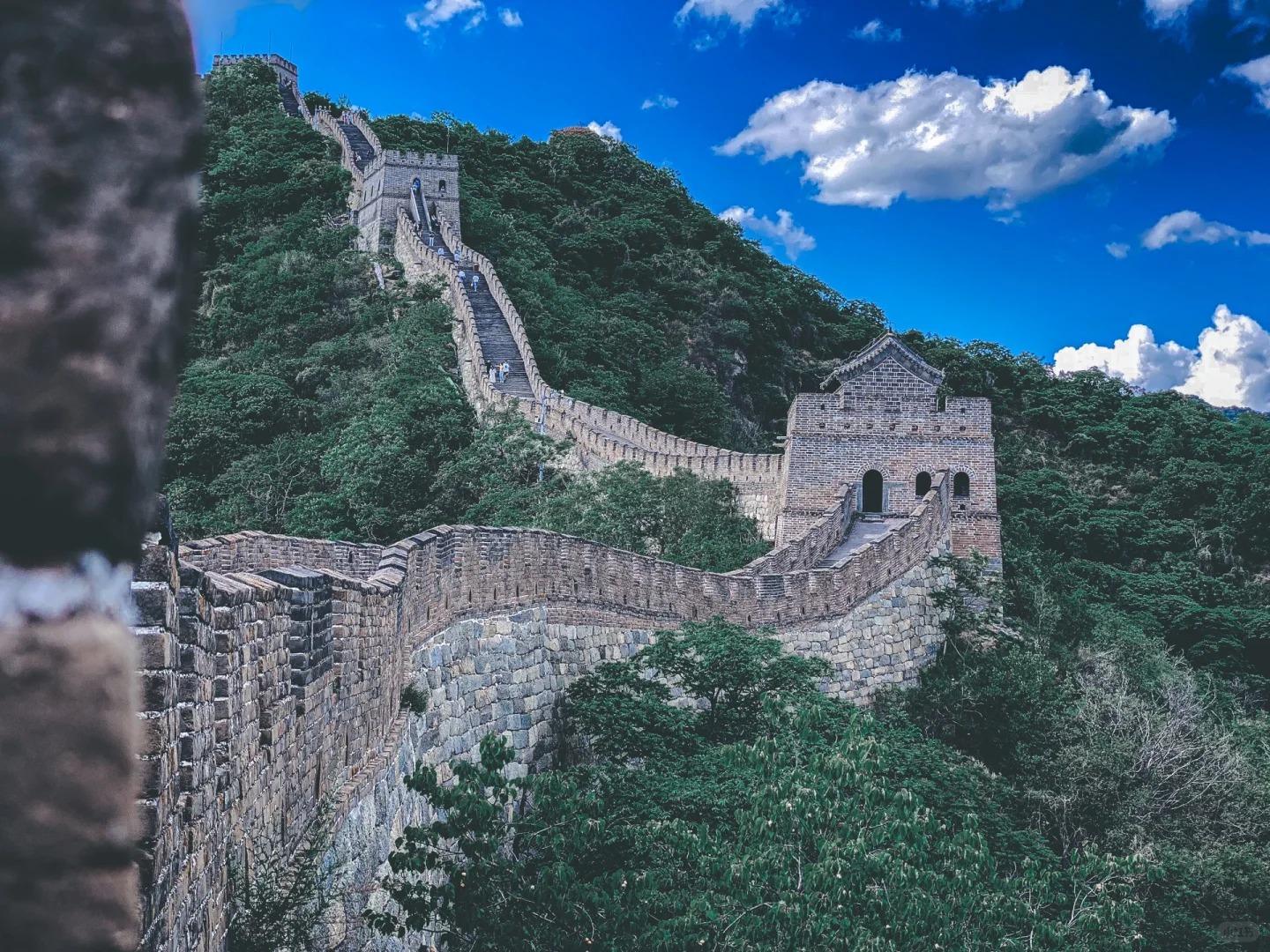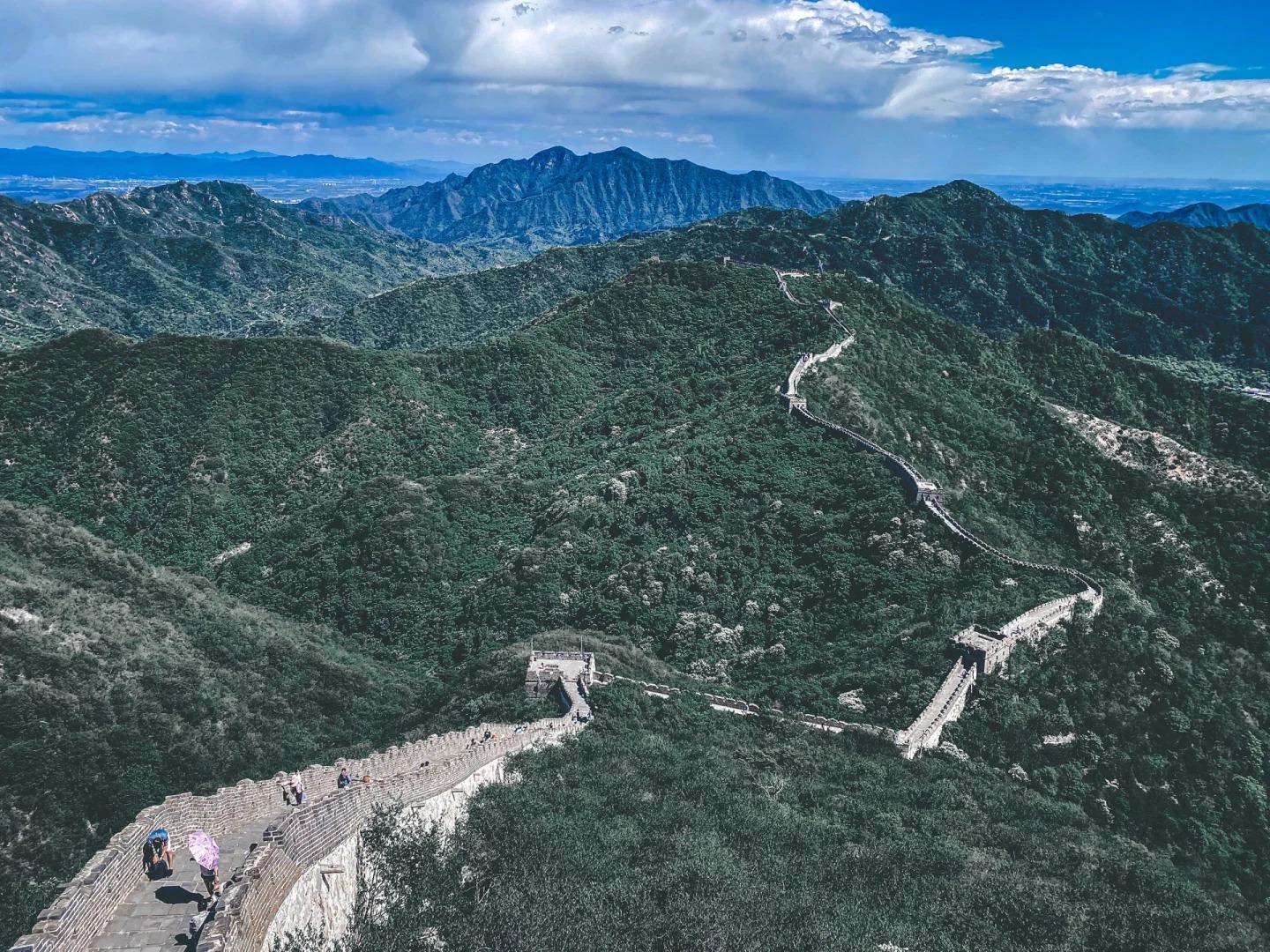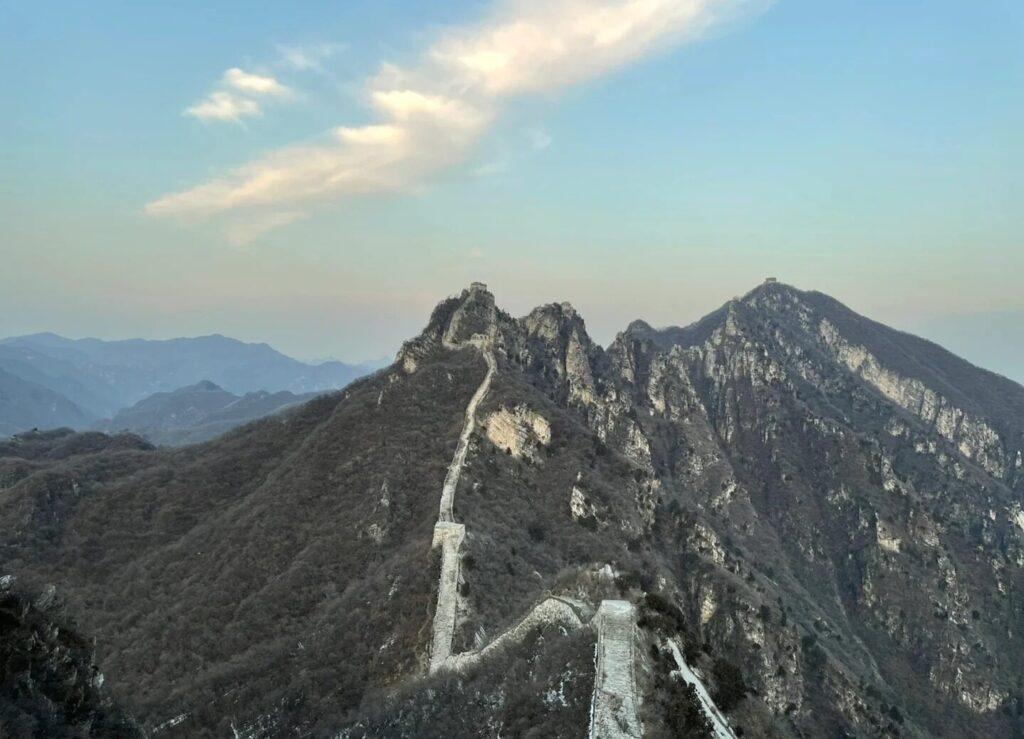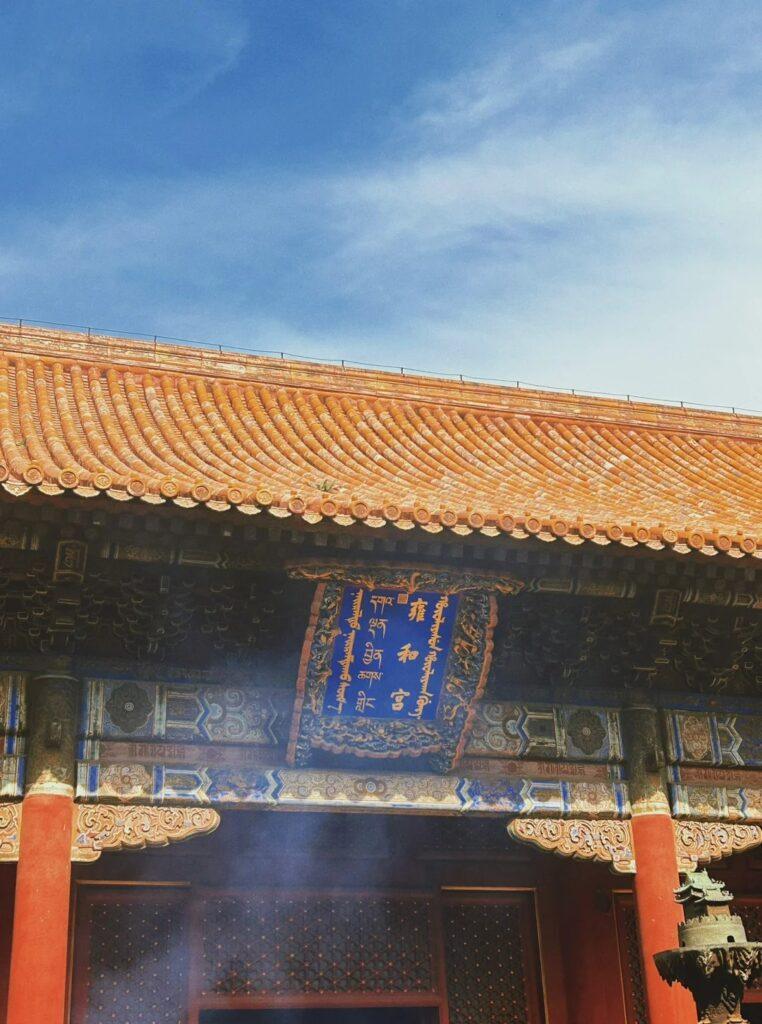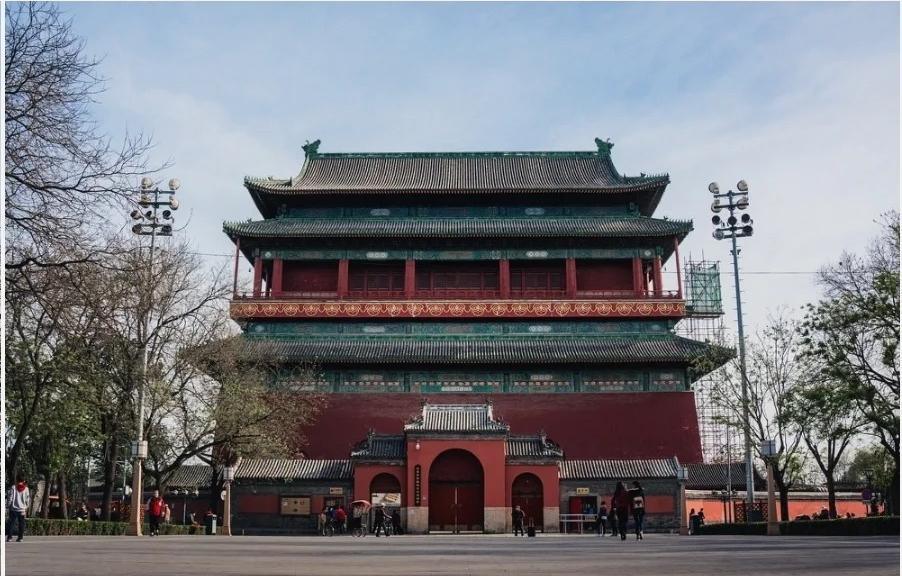Visiting Information
| Information | Details |
|---|---|
| Chinese Name | 慕田峪长城 (Mùtiányù Chángchéng) |
| Location and Address | Huairou District, Beijing, China |
| Opening Time/Hours | 7:30 AM – 5:30 PM (April to October) 8:00 AM – 5:00 PM (November to March) |
| Entrance Fee | 45 CNY (Adults) 25 CNY (Students and seniors) Cable car: 100 CNY (round trip), 80 CNY (one way) Toboggan: 100 CNY |
| How to Get There | By Bus: Take bus 916 from Dongzhimen to Huairou North Street, then transfer to bus H23 to Mutianyu Great Wall By Taxi: About 1.5 hours from Beijing city center No direct metro access |
| Best Time for Visit | April to October (spring and autumn for best weather and scenery) |
| Contact Info | Phone: +86 10 6162 6022 Email: Not available |
Overview
The Mutianyu section of the Great Wall of China is one of the most well-preserved and popular parts of the Great Wall. Located approximately 70 kilometers northeast of Beijing, Mutianyu offers visitors a less crowded alternative to the Badaling section while still providing stunning views and a rich historical experience. This section of the wall stretches for 5.4 kilometers and features 23 watchtowers, making it a prime example of Ming Dynasty (1368-1644) defensive architecture.
Historical Background
The Mutianyu Great Wall was first built during the Northern Qi Dynasty (550-577) and was significantly rebuilt and fortified during the early Ming Dynasty under the supervision of General Xu Da. Its strategic location was crucial for defending the capital and imperial tombs from Mongol invasions from the north. The wall at Mutianyu is unique in that it has fortifications on both sides, allowing defenders to fend off attacks from both directions. After the Ming Dynasty, the wall fell into disrepair but was extensively renovated in the 1980s, becoming one of the first sections of the Great Wall to open to tourists.
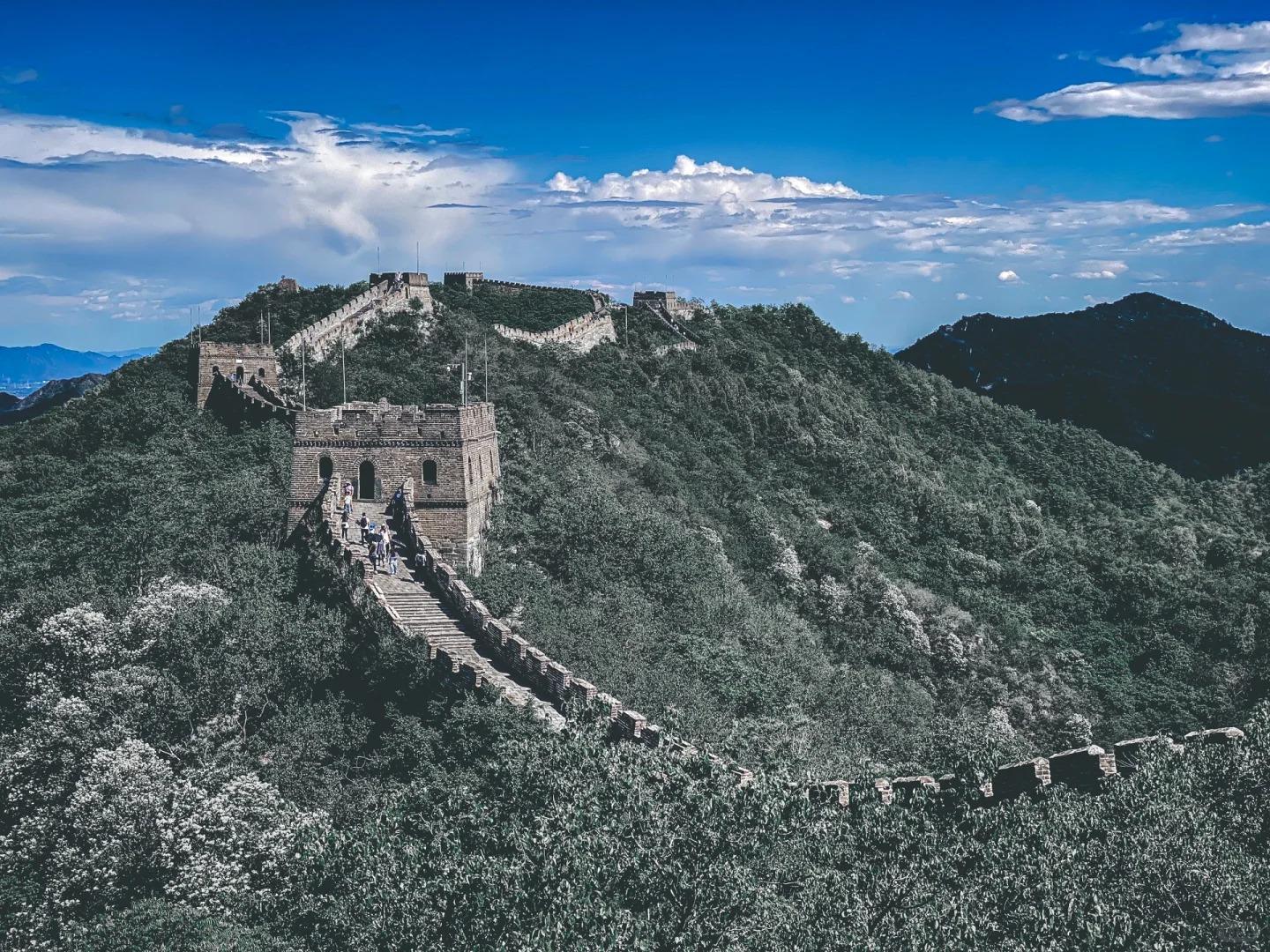
Architectural Features
- Watchtowers: The Mutianyu section is known for its dense concentration of watchtowers, with 23 towers spread along its 5.4-kilometer length. These towers were used for surveillance, signaling, and defense. The most notable is the Zheng Guan Tai watchtower, which is a rare three-story structure with windows on all four sides, providing panoramic views of the surrounding landscape.
- Wall Construction: The wall at Mutianyu is built primarily of granite and is notably wide, measuring 4-5 meters across at the top. This width allowed for multiple soldiers to pass each other and for horses to be ridden along the wall. The outer side of the wall is crenellated with battlements, while the inner side has a raised walkway to allow for easy movement of troops and supplies.
- Pass and Gateway: The Mutianyu Pass is a strategic point along this section of the wall. It features a large, arched gateway that could be sealed off in times of danger. The pass was designed to control movement along the wall and to serve as a checkpoint for travelers and merchants.
- Defensive Features: Unlike many other sections of the Great Wall, Mutianyu has fortifications on both sides. This unique feature allowed defenders to repel attacks from both the north (potential Mongol invasions) and the south (in case the wall was breached). The wall also incorporates features like machicolations (openings for dropping objects on attackers) and arrow loops for archers.
Cultural Importance
The Mutianyu Great Wall holds significant cultural importance as a symbol of Chinese civilization and national pride. It represents the ingenuity, determination, and collective effort of the Chinese people in ancient times. As part of the larger Great Wall complex, Mutianyu embodies the historical struggles and triumphs of the Chinese nation against foreign invasions. The wall serves as a tangible link to China’s past, offering insights into ancient military strategies, architectural techniques, and the daily lives of soldiers who manned the fortifications. In modern times, Mutianyu has become an important site for cultural education and heritage preservation. It plays a crucial role in promoting understanding of Chinese history among both domestic and international visitors. The site’s restoration and opening to the public reflect China’s efforts to preserve its cultural heritage while sharing it with the world. Mutianyu’s scenic beauty, combined with its historical significance, makes it a powerful representation of China’s cultural landscape, blending human achievement with natural splendor.
Surrounding Attractions
- Mutianyu Village: Located at the foot of the Great Wall, Mutianyu Village offers a glimpse into rural Chinese life. The village, with its traditional courtyard houses and narrow streets, provides a stark contrast to the grandeur of the wall above. Visitors can explore local shops selling handicrafts and enjoy authentic Chinese cuisine in family-run restaurants. The village also serves as a base for hikers and nature enthusiasts looking to explore the surrounding countryside.
- Huanghuacheng Reservoir: Situated about 30 kilometers from Mutianyu, the Huanghuacheng Reservoir offers a unique view of the Great Wall partially submerged in water. This scenic area is known as the “Water Great Wall” and provides excellent opportunities for photography, especially during sunset. Visitors can take boat rides on the reservoir or hike along less-restored sections of the wall for a more adventurous experience.
- Hongluo Temple: Located approximately 20 kilometers from Mutianyu, Hongluo Temple is one of the oldest Buddhist temples in Beijing. Dating back to the Tang Dynasty (618-907), the temple is famous for its ancient ginkgo trees and the legend of two red snakes that once inhabited the area. The temple complex includes several halls, pagodas, and beautiful gardens, offering a peaceful retreat and insight into Chinese Buddhist culture.
- Jiankou Great Wall: For more adventurous travelers, the wild and unrestored Jiankou section of the Great Wall is about 15 kilometers west of Mutianyu. Known for its steep mountains and rugged terrain, Jiankou offers a challenging hiking experience and spectacular views. This section is popular among photographers for its dramatic landscapes and the opportunity to see the wall in its natural, unrestored state. However, visitors should be well-prepared and consider hiring a guide due to the challenging terrain.
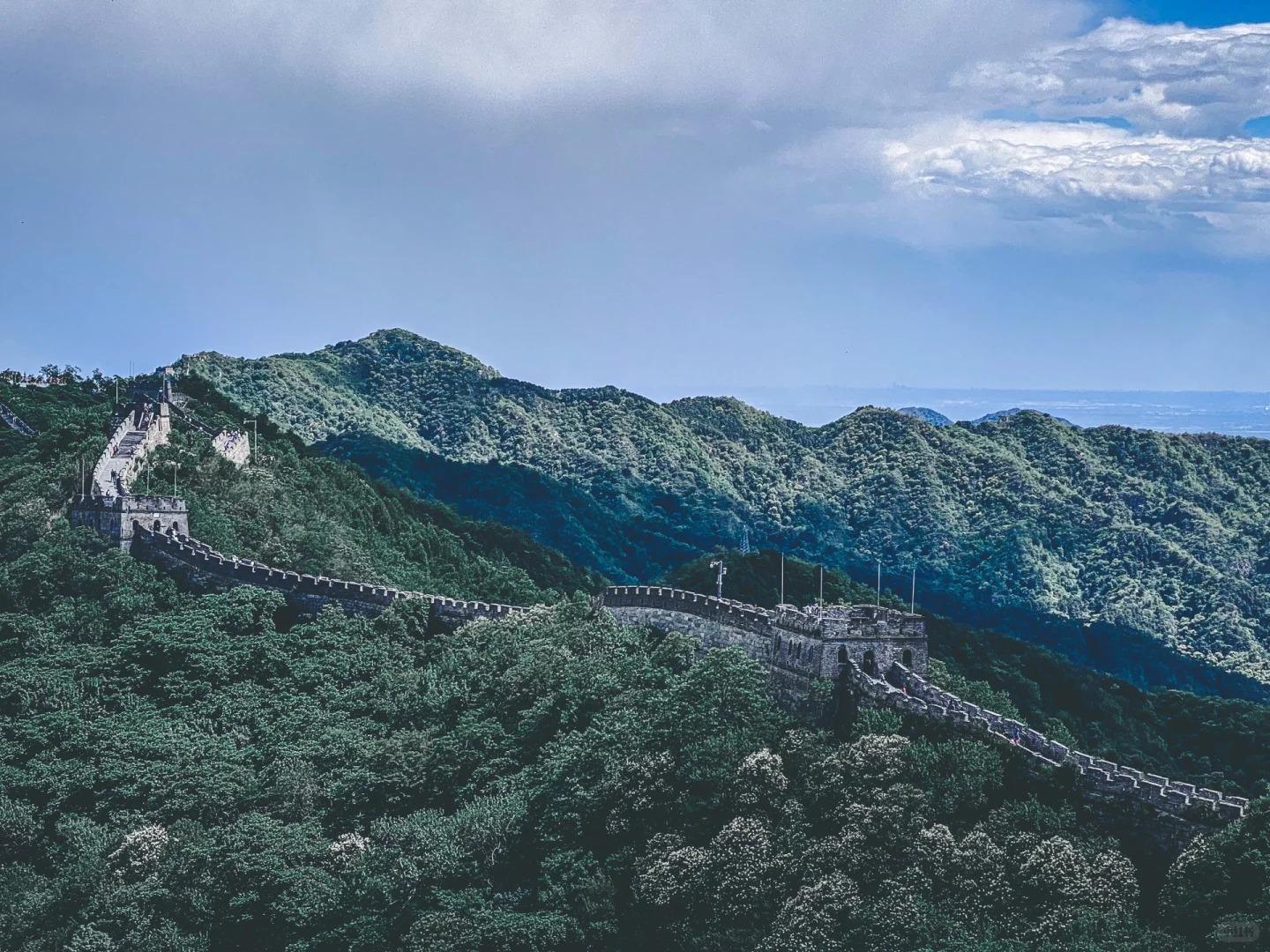
Photography Opportunities
- Panoramic Views: The elevated position of the Mutianyu Great Wall offers stunning panoramic views of the surrounding mountains and forests. Photographers can capture sweeping vistas that showcase the wall snaking through the landscape, especially from higher watchtowers like Zheng Guan Tai. Early morning or late afternoon light can create dramatic shadows and highlight the contours of the wall and the surrounding terrain.
- Architectural Details: The well-preserved architecture of Mutianyu provides excellent opportunities for detail shots. Focus on elements like the intricate brickwork, weathered stone steps, or the arched windows of watchtowers. These close-up shots can convey the age and craftsmanship of the wall, telling a story of its long history.
- Seasonal Variations: Each season offers unique photographic opportunities at Mutianyu. Spring brings blooming flowers and lush greenery, summer offers clear skies and vibrant colors, autumn transforms the surrounding forests into a palette of reds and golds, while winter can drape the wall in snow, creating a serene, monochromatic landscape.
- Human Elements: Incorporating visitors into your shots can add scale and a human element to the grandeur of the wall. Capture people climbing the steep steps, looking out from watchtowers, or walking along the ramparts to illustrate the interaction between this ancient structure and modern visitors.
Modern Importance
- Tourism and Economic Impact: The Mutianyu section of the Great Wall has become a major tourist attraction, contributing significantly to the local and national economy. Its accessibility from Beijing and well-maintained facilities make it popular among both domestic and international visitors. The influx of tourists has created jobs and business opportunities for local communities, from tour guides and souvenir sellers to restaurant and hotel owners. This economic boost has helped in the development of the surrounding area while also raising awareness about the importance of preserving historical sites.
- Cultural Exchange and Education: As one of the most visited sections of the Great Wall, Mutianyu plays a crucial role in cultural exchange and education. It serves as a living classroom where visitors from around the world can learn about Chinese history, architecture, and military strategy. Educational programs and guided tours at the site help in disseminating knowledge about China’s past and its significance in world history. This cultural exchange fosters international understanding and appreciation of Chinese heritage.
- Conservation and Restoration Model: The restoration and maintenance of the Mutianyu Great Wall serve as a model for heritage conservation in China and globally. The site demonstrates how historical structures can be preserved while also accommodating modern tourism needs. Ongoing conservation efforts, including the use of traditional materials and techniques alongside modern preservation methods, provide valuable insights for other heritage sites facing similar challenges. The balance struck between accessibility and preservation at Mutianyu influences conservation practices at other cultural heritage sites.
- Symbol of National Identity: In modern China, the Great Wall, including the Mutianyu section, continues to be a powerful symbol of national identity and pride. It represents the endurance, ingenuity, and unity of the Chinese people. The wall’s image is frequently used in national and international contexts to represent China, appearing in media, literature, and official communications. This symbolic importance reinforces the nation’s commitment to preserving its cultural heritage and showcasing its long history to the world.
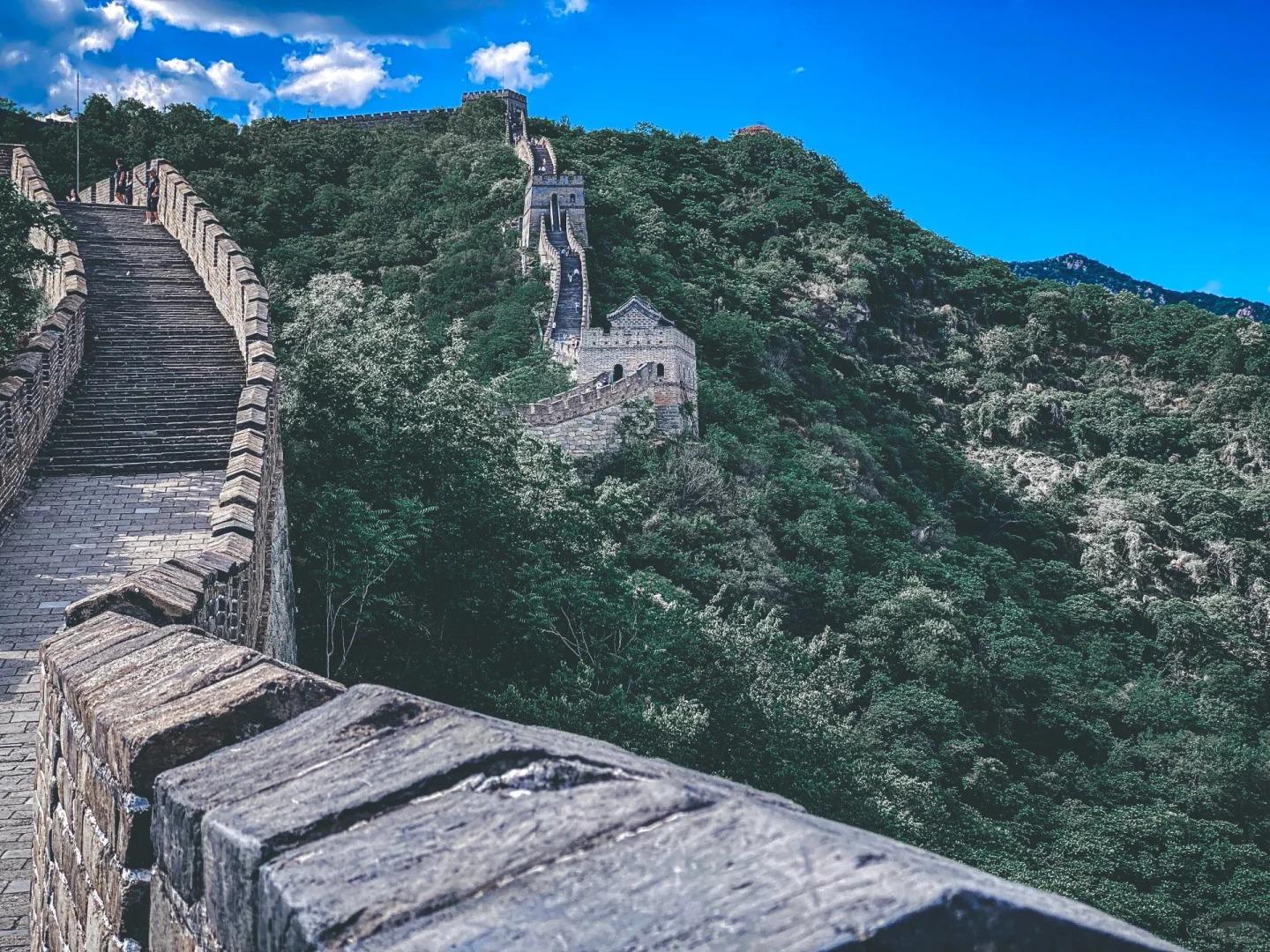
FAQ
- What is the Mutianyu Great Wall famous for?
The Mutianyu Great Wall is famous for being one of the best-preserved sections of the Great Wall, its stunning mountain scenery, fewer crowds compared to other sections, and its unique features such as watchtowers on both sides of the wall. - What’s inside the Mutianyu Great Wall?
Inside the Mutianyu Great Wall, you’ll find:
1. 23 well-preserved watchtowers
2. Wide walkways along the top of the wall
3. Steep steps and inclines
4. Stunning views of the surrounding mountains and forests
5. A cable car and toboggan ride for easier access
6. Exhibition areas with historical information - Is the Mutianyu Great Wall free?
No, the Mutianyu Great Wall is not free to visit. There is an entrance fee of 45 CNY for adults and 25 CNY for students and seniors. Additional fees apply for the cable car and toboggan rides. - Is the Mutianyu Great Wall worth visiting?
Yes, the Mutianyu Great Wall is definitely worth visiting. It offers a less crowded experience than some other sections, beautiful scenery, well-preserved architecture, and convenient facilities. It’s particularly good for those who want a mix of history, natural beauty, and outdoor activity. - What to do in the Mutianyu Great Wall?
At the Mutianyu Great Wall, you can:
1. Hike along the wall and explore the watchtowers
2. Take the cable car up and toboggan down for a unique experience
3. Enjoy panoramic views of the surrounding landscape
4. Learn about the wall’s history through informational displays
5. Take photographs of the stunning scenery
6. Visit nearby attractions like Mutianyu Village
7. Participate in guided tours for more in-depth information - How do I get to the Mutianyu Great Wall in the local city?
To get to the Mutianyu Great Wall from Beijing:
1. Take bus 916 Express from Dongzhimen to Huairou North Street, then transfer to bus H23 to Mutianyu Great Wall
2. Take a taxi or private car, which takes about 1.5 hours from central Beijing
3. Join an organized tour that includes transportation
4. There’s no direct metro access to Mutianyu - How to visit the Mutianyu Great Wall?
To visit the Mutianyu Great Wall:
1. Plan to arrive early, especially during peak season
2. Purchase tickets at the entrance or book in advance if possible
3. Decide whether to hike up or take the cable car (additional fee)
4. Wear comfortable shoes and clothing suitable for hiking
5. Bring water and snacks, as options on the wall are limited
6. Allow at least 2-3 hours to explore the wall
7. Consider hiring a guide for more historical context
8. Don’t miss the toboggan ride down if you’re feeling adventurous
9. Visit the nearby Mutianyu Village for local culture and food


